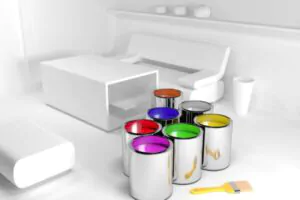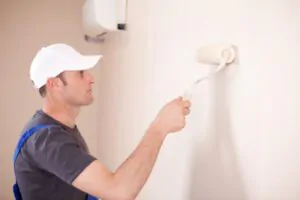acrylic paint, humidity, home improvement, ceiling, ventilation, drywall, summer, interior painting services, professional painters, free estimate, snow, latex, moisture, dehumidifier, roof, room temperature, fahrenheit, room, winter, primer, wind, dust, thermostat, wall, construction, evaporation, mildew, behr, weather forecasting, daylight, adhesion, climate, odor, brush, painting contractors, drying times, thermometer, dew, infrared, lighting, coat, mold, infrared thermometer, metal, environmentally friendly, oil, pressure, sunlight, pressure washing, floor, lead paint, countertop, condensation, foam, thermal insulation, leak, crawl space, basement, vapor barrier, spray foam, bathroom, fiberglass, air conditioning, attic, heat transfer, concrete, siding, wood, mineral wool, foundation, shower, dew point, water heating, wool, pipe, renovation, mineral, hvac, bedroom, cooking, duct, soil, inch, framing, noise, baseboard, plastic, cellulose, indoor air quality, humidifier, efficiency, fireplace, pump, carpet, polystyrene, heat recovery ventilation, soundproofing, hygrometer, drainage, caulk, masonry, tile, building envelope, downspout, fire safety, polyisocyanurate, pest control, sump, electrical wiring, lawn
How cold is too cold to paint inside?
Painting indoors at temperatures below 50°F (10°C) is generally considered too cold, as it can affect paint adhesion, drying time, and overall finish quality. For optimal results, maintain indoor temperatures above this threshold.
Can you paint interior walls in the winter?
Painting interior walls in the winter is entirely possible and can be beneficial. With proper precautions like adequate ventilation and using low-VOC paints, you can achieve great results while taking advantage of the lower humidity levels during this season.
Is it ok to paint interior walls in the winter?
Painting interior walls in winter is perfectly fine, as long as you ensure proper ventilation and maintain suitable indoor temperatures to facilitate drying. Winter can actually be a great time for painting, minimizing disruptions from outdoor activities.
Can you paint interior walls in winter?
Painting interior walls in winter is not only possible but can also be beneficial. With proper ventilation and temperature control, winter painting can enhance indoor air quality and reduce drying time, making it an ideal season for home improvement.
Is it a good idea to paint walls in winter?
Painting walls in winter can be a good idea. The cooler temperatures and low humidity can help paint dry more evenly, reducing the risk of issues like dripping or uneven coverage, making winter an ideal time for your interior painting projects.
What happens if you paint your house in cold weather?
Painting your house in cold weather can lead to issues like longer drying times, poor adhesion, and potential cracking or peeling of the paint. For optimal results, it's best to paint when temperatures are above 50°F.
What temperature is ideal for indoor painting?
The ideal temperature for indoor painting is between 60°F and 80°F (15°C to 27°C). This range ensures optimal drying time and adhesion, resulting in a smooth finish for your interior walls.
How to prepare walls for winter painting?
Preparing walls for winter painting involves cleaning the surfaces thoroughly, filling any cracks or holes, and ensuring the room is well-ventilated. Additionally, check the temperature and humidity levels to ensure optimal drying conditions.
What precautions are needed for winter painting?
The precautions needed for winter painting include ensuring proper ventilation, maintaining indoor temperatures between 50°F and 85°F, and using paint designed for colder conditions. Additionally, check humidity levels to prevent issues with paint adhesion and drying.
Can I use regular paint in winter?
Using regular paint in winter is generally not recommended. Cold temperatures can hinder the paint's curing process, leading to poor adhesion and finish. It's best to use paint specifically formulated for low temperatures to achieve optimal results.
Which paint types are best for winter?
The best paint types for winter are specifically formulated latex paints, as they cure quickly and have low VOCs. Look for paints labeled for cold weather use, ensuring optimal adhesion and drying in cooler temperatures.
Does humidity affect painting in winter?
Humidity does affect painting in winter. High humidity can lead to longer drying times and potentially impact the adhesion of paint, making it essential to monitor humidity levels for optimal results during winter projects.
How long does paint take to dry in winter?
Paint drying times in winter can be longer due to lower temperatures and humidity. Typically, water-based paints may take 1 to 2 hours to become dry to the touch, while oil-based paints can take 6 to 8 hours or more.
What is the impact of cold on paint curing?
The impact of cold on paint curing is significant. Cold temperatures can slow down the curing process, potentially leading to improper adhesion and finish, resulting in a less durable paint job.
Can I ventilate while painting in winter?
Ventilating while painting in winter is essential for maintaining indoor air quality. You can open windows briefly to allow fresh air in, ensuring proper airflow while managing the temperature to help the paint cure effectively.
Are there benefits to painting in cold weather?
The benefits of painting in cold weather include quicker drying times and reduced paint waste due to lower temperatures. Additionally, fewer allergens and lower humidity typically present during winter create an ideal environment for interior painting projects.
What projects are suitable for winter painting?
Projects suitable for winter painting include interior residential rooms, commercial spaces, and other indoor structures. The controlled temperatures provide optimal drying conditions, allowing for quicker project completion and minimizing the disruption of daily activities.
Do I need heat while painting indoors?
Heating is essential when painting indoors during winter. Adequate warmth ensures proper paint application, faster drying times, and helps prevent issues like bubbling or peeling, leading to a more durable finish.
How to ensure quality during winter painting?
Ensuring quality during winter painting involves selecting suitable paint with low-temperature properties, maintaining proper indoor ventilation, and keeping the space heated to allow for optimal drying conditions. Prioritize these factors for the best results.
What is the best time of day to paint indoors?
The best time of day to paint indoors is mid-morning to early afternoon. This window provides optimal natural light, allowing you to see the true color of the paint while ensuring good ventilation for quicker drying.
How does cold weather affect paint finish?
Cold weather can negatively impact paint finish by causing slower drying times and potential adhesion issues. Low temperatures may also lead to an uneven appearance, making it vital to choose the right products and maintain appropriate conditions during winter painting.
Can exterior temperatures influence indoor painting?
Exterior temperatures can indeed influence indoor painting. Cold outdoor conditions can prolong drying times and affect the adhesion of paint, while warm temperatures may help with quicker drying. It's essential to maintain a consistent indoor temperature for optimal results.
Is it safe to paint with open windows in winter?
Painting with open windows in winter can be safe if proper precautions are taken. Ensure that the room remains warm and well-ventilated to expedite drying while avoiding extreme cold drafts that can affect paint adhesion and consistency.
What should I avoid when painting in winter?
When painting in winter, avoid using paint that requires high temperatures to cure and ensure proper ventilation. Also, steer clear of painting on extremely cold days or when humidity levels are high, as these conditions can affect the paint's adhesion and drying time.
How to manage paint fumes in winter?
Managing paint fumes in winter involves ensuring proper ventilation despite closed windows. Use air purifiers, fans, and dehumidifiers to reduce fumes, and take breaks in fresh air outside to maintain a healthy indoor environment during your painting project.
What are the risks of winter interior painting?
The risks of winter interior painting include slower drying times due to lower temperatures and humidity, which can lead to issues like poor adhesion and potential for paint damage. Additionally, inadequate ventilation can trap harmful fumes indoors.
How can I find winter painting services?
Finding winter painting services is straightforward. You can start by searching online for local painters in Santa Fe, NM, specifically those who highlight their winter availability, or contact Santa Fe Painters for expert winter painting solutions.
What should I check before winter painting?
Before winter painting, you should check the temperature and humidity levels to ensure optimal conditions, inspect your walls for moisture or damage, and ensure adequate ventilation for proper drying and curing of paint.
How to choose colors for winter painting?
Choosing colors for winter painting involves selecting warm, inviting hues that enhance coziness and brightness in your space. Rich earth tones, soft neutrals, and vibrant accents can make interiors feel warm and welcoming during the colder months.
Can winter painting impact home energy efficiency?
Winter painting can positively impact home energy efficiency. Freshly painted interior walls with quality insulation can help regulate indoor temperatures, reducing the need for heating and potentially lowering energy bills during cold months.
can you paint walls in the winter, can i paint walls in winter, can you paint interior walls in the winter, can i paint interior walls in the winter, painting interior walls in winter, can you paint walls in winter







